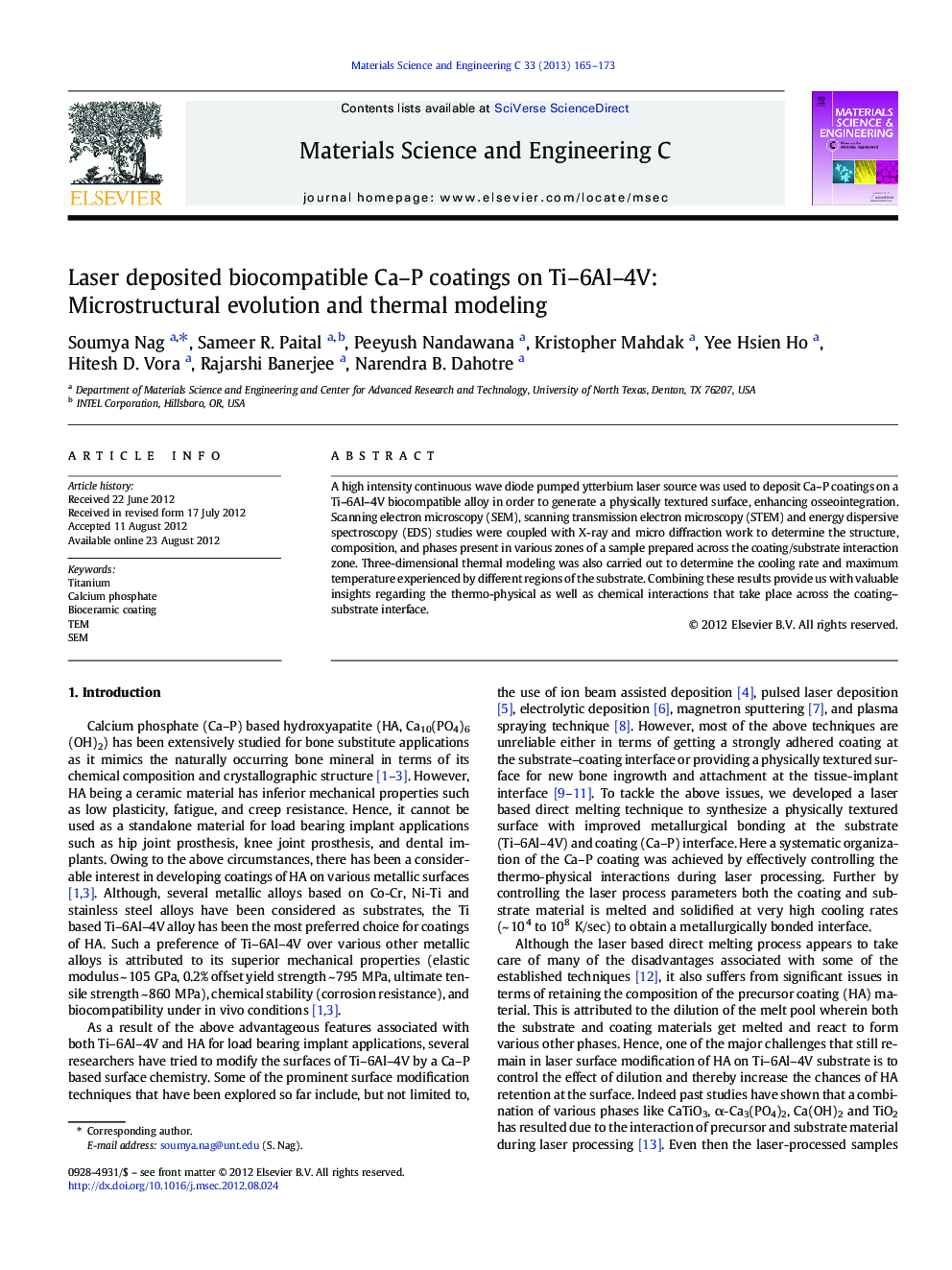| کد مقاله | کد نشریه | سال انتشار | مقاله انگلیسی | نسخه تمام متن |
|---|---|---|---|---|
| 1429056 | 987163 | 2013 | 9 صفحه PDF | دانلود رایگان |

A high intensity continuous wave diode pumped ytterbium laser source was used to deposit Ca–P coatings on a Ti–6Al–4V biocompatible alloy in order to generate a physically textured surface, enhancing osseointegration. Scanning electron microscopy (SEM), scanning transmission electron microscopy (STEM) and energy dispersive spectroscopy (EDS) studies were coupled with X-ray and micro diffraction work to determine the structure, composition, and phases present in various zones of a sample prepared across the coating/substrate interaction zone. Three-dimensional thermal modeling was also carried out to determine the cooling rate and maximum temperature experienced by different regions of the substrate. Combining these results provide us with valuable insights regarding the thermo-physical as well as chemical interactions that take place across the coating–substrate interface.
► Complex chemical compounds are formed due to substrate–coating interaction.
► The identified phases were Ca3(PO4)2, CaTiO3 and glassy regions of P and Ti.
► The coated surface experiences maximum temperature and cooling rate.
Journal: Materials Science and Engineering: C - Volume 33, Issue 1, 1 January 2013, Pages 165–173